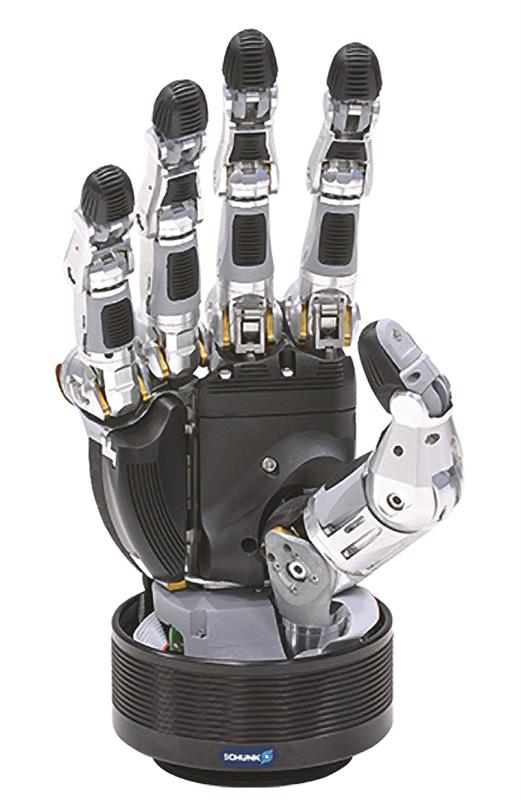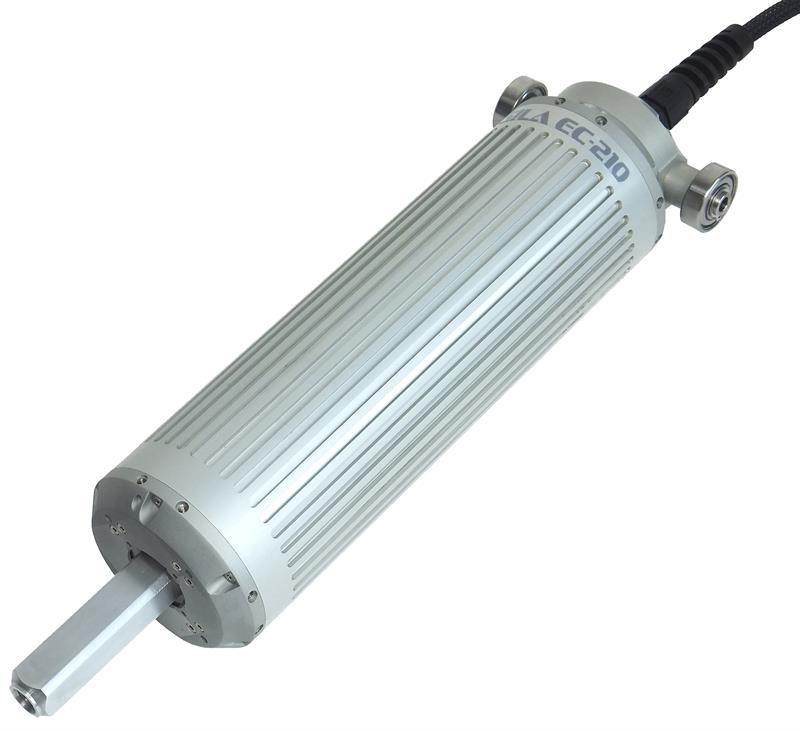The efficiency and convenience of electrical actuators is driving a global trend away from hydraulic and pneumatic actuation. Innovative mobile IoT devices such as wearable bionics and service robots reinforce this trend, generating requirements for more capable electrically powered motion control that is reliably effective in unpredictable environments (such as those involving humans) and more sustainable. Whereas most of the technologies needed by service robots are readily available as a result of mobile phone, automotive and other consumer driven developments, actuation remains the critical exception. Lack of highly capable and versatile motion control is a significant issue with potential to delay growth in the service robotics market.
Electric actuators
Today’s state-of-the-art electric actuators typically consist of a planetary roller screw for linear and a harmonic drive for rotary transmission, both developed in the 1960s. packaged with control electronics in a highly optimised unit. The transmission converts torque developed by the motor into forceful motion. Leading examples include Exlar linear and Harmonic Drive rotary actuators.
However, there are fundamental limitations with these electric actuation technologies. High efficiency is limited by friction in the transmission, particularly at low torques and only achieved over a narrow dynamic range. Thick lubricants further reduce efficiency and increase costs. Use of a separate transmission adds significant cost, weight, bulk and noise. Complex construction methods increase manufacturing cost and jamming risk. Potential to jam prevents the use of roller and ball screw actuators in important safety critical applications such as aerospace.
Typically, actuators perform specific tasks in controlled environments. They power industrial robots on production lines, where size, noise, weight, power consumption and maintenance are not critical and use cases are well specified and predictable. Constraints on how actuators are deployed are so significant that products and systems are generally designed around them – an unacceptable constraint for consumer products where appearance is key.
 Unsurprisingly, there is immediate demand for more capable electric actuators for service robots, for both consumer and industrial applications. In contrast to traditional industrial robots, service robots face an unpredictable range of use cases.
Unsurprisingly, there is immediate demand for more capable electric actuators for service robots, for both consumer and industrial applications. In contrast to traditional industrial robots, service robots face an unpredictable range of use cases.
The actuation challenge
To complete tasks successfully in dynamic real world environments, they need reliable motion control over a far broader dynamic range. This is an actuation challenge. The market-leading Schunk five-fingered hand (left) uses nine motor and transmission pairs within the hand envelope to achieve baseline performance.
Consider tasks involving human interaction. For safety, a robot co-working with a [demanding and unpredictable] human must have highly controllable motion with failsafe ability to avoid any person in its path and to move with appropriate speed and force. Robotic assistants in the home will also need smooth, accurate, relatively slow but forceful motion with back-driveability for human compatibility. To be acceptable to the wearer, actuation in a bionic limb must be unobtrusive (light, quiet, streamlined, fit within the limb envelope, provide realistic motion) and be reliably powerful and responsive (acceleration and speed). Service robots must also be low maintenance and, as for all mobile devices, high efficiency over the full dynamic range is vital. Batteries are heavy and daytime recharging may be inconvenient and/or problematic. Efficiency also enables back-driveability, essential for leg free swing and a normal gait. Similar requirements arise when designing exoskeletons for supplementing, extending and recovering human physical condition.
These characteristics are all exhibited by human muscle and it is clear that bionic devices and many service robots will need ‘muscle equivalent’ actuation if they are to meet consumer needs and catalyse wide-scale adoption. The EU Framework 7 project 'Viactors' (2009 - 2012) found that “actuator performance is perhaps the main limitation … on commercialisation of 'human friendly' robotics”. This can be extrapolated to many mobile and safety-critical devices such as the next generation of connected, interoperable, actuated products to enable our aging population to live well and independently for longer.
Applications
Similar actuation needs are found in established markets where many of the dull, dirty and dangerous tasks identified as early targets for service robotics are currently performed by humans – supported by automated tools, which depend on electric actuation.
In Aerospace there is a strong economic case for an all/near electric plane but safety considerations prevent the use of electro-mechanical actuators such as ball and planetary roller-screws for primary flight control surfaces as these can jam, blocking any fall-back system. Other logistics applications include electric cars, trains, agriculture, marine and mining.
Precise motion control is also key to many life-saving medical devices. Safety, reliability, accuracy, quiet operation and the ability to fit within constraints imposed by co-operating medical systems are pre-eminent concerns in this rapidly evolving market. In keyhole and telehaptic operations, the need for greater actuator force sensitivity (linked to back-drivability) is certainly a barrier to progress.
 A UK technology company, WaveDrives, has recently completed a fundamental re-design of the electric actuator with the initial aim of addressing challenges in bionics. The result is an electric drive technology with tight integration of electric motor and frictionless gearing in a power dense, efficient and streamlined package.
A UK technology company, WaveDrives, has recently completed a fundamental re-design of the electric actuator with the initial aim of addressing challenges in bionics. The result is an electric drive technology with tight integration of electric motor and frictionless gearing in a power dense, efficient and streamlined package.
Can science offer solutions to bridge this gap? The limitations of existing electrical actuators, especially for bipedal walking applications, were noted in the seminal work on electromagnetic series elastic actuators (EM SEA) at MIT in the 1990s. This showed that incorporating a mechanical series elastic component aids actuator robustness, shock tolerance and force control. However, MIT was less successful with a muscle-equivalent electro-mechanical actuator - using EM-SEA's, which clearly resulted in inefficient operation outside resonant frequencies. More recent research from MIT's Biomimetic Robotic Lab has recognised EM-SEA’s may only be relevant to low-bandwidth applications, highlighting that the increase in actuator complexity detracts from practical applicability. A current focus of scientific attention is electro-hydraulic actuation, with increasing sophistication enabled by advances in 3D printing. Although inefficient, these hydraulic actuators deliver high dynamic performance and power density.
A UK technology company, WaveDrives, has recently completed a fundamental re-design of the electric actuator with the initial aim of addressing challenges in bionics. The result is an electric drive technology with tight integration of electric motor and frictionless gearing in a power dense, efficient and streamlined package. The WaveDrives electric cylinder has one moving part, is virtually silent in operation and requires no lubrication due its contact-less transmission. A low part count and simple construction make it robust and dust-tolerant. Possibly most significant for the growth of service robotics, this technology exhibits high efficiency and back-driveability at low speeds and high gearing ratios - breaking electro-mechanical actuator limitations to deliver the performance of human muscle, with greater efficiency. Initially constructed as a linear actuator with a size and power appropriate for a human thigh, other sizes and rotary formats are in development.
WaveDrive efficiency, reliability and high force at low speeds is attracting interest from new product and technology development programmes. Its potential to match electro-hydraulic systems’ high dynamic performance and power density will soon be tested. Whether this device can disrupt the market is yet to be seen but the race to offer more efficient, highly capable and reliable electric motion control for service robots and other actuated devices and systems is well underway.











